In a memorable story, the main character is not the person they were at the start by the end. In fact, their development is part of what keeps readers engaged and invested. Plottr’s Character Arc template will help you take characters from Selfish Jerks to Romantic Jakes.
In this article, we’ll cover what a character arc is. You’ll learn why you need to create one for your protagonist (at a minimum). Plus, how to use Plottr’s Character Arc Template to help you construct your story.
What is a Character Arc?
A character arc refers to the transformation (or lack thereof) a character undergoes over the course of a story. The situations and inner battles they encounter along the way transform them.
There are several types of character arcs, including the “transformational path.” This is a common arc for following a character’s journey to self improvement — and victory! Tracking these arcs and illuminating them for readers helps build emotional investment and makes your character someone worth cheering for.
The Character Arc template in Plottr provides a simple framework to help you map just these changes.
4 Reasons You Need to Create Character Arcs
If your main characters don’t change over the course of the story, then readers are going to be bored. Readers want characters they can see growing — someone they can get to know over time.
Here are four reasons you need to create story arcs for your characters:
- To craft a compelling narrative. Think of your own favorite books and films. If your main character starts out destitute and hopeless, you want to show them striving for financial and emotional stability. Things don’t need to work out perfectly in the end, but something (internally or externally) must change.
- To help with plotting. If you know the emotional journey your character must take, this will help you build a plot that moves them to act. For example, what if you have an introverted character whose journey requires them to become more extroverted? Then you know you will need to craft scenes that demonstrate that transformation.
- To develop obstacles. Your character’s journey needs to have bumps in the road. If you’re taking your hero from jerk to good guy, they should face situations where it would be easy to revert to old ways. They might even revert partially in a compelling “one step forward, two steps back” type of dance. But the reader will see the protagonist is trying. Struggling, but trying.
- To keep you on track. If you have a framework of your character’s journey, it’s easier to stick to writing scenes that support that journey. You’ll be less likely to go off on tangents you’ll end up cutting later because they’re not necessary to the story or character development.
Plottr’s Character Arc template, located in the Characters section of Plottr, will guide you in creating a solid path to change for your characters.
Using the Plottr Character Arc Template
Plottr’s Character Arc Template will help you identify and organize the following critical steps for each of your characters:
Here are the components of the template in Plottr:
- First Impression: What is your character like at the beginning of the story? Rude or meek? Down on her luck or at the top of the world? How does she think of herself and how do others view her? How does she view the world? Can the reader relate to her and empathize with her plight?
- Goal: Every character has to have a story goal — something they want or need, which they will spend the story pursuing.
- Flaw: What undesirable qualities or weaknesses are preventing your character from achieving their goal? Remember that a character’s flaws are just as compelling — sometimes even more so — as their strengths, so make yours complex and honest.
- Aha! Moment: This is when the character recognizes how their flaw affects them in a negative way, preventing them from achieving their goals. They see a new path or way of doing things that’s much better than how they’ve been doing them thus far. It’s a lightbulb moment of clarity, profound enough to motivate real change.
- Action: How does the character react to the revelation of their Aha! Moment? What actions do they take to avoid succumbing their flaw, instead transforming it into a strength?
- Transformation: What is the character like at the end of the story, after they’ve recognized their flaw and taken action to change? What is the conclusion of their character arc? Whether they achieve their goal or not, and how they got there, should affect their transformed self.
The Character Arc Template doesn’t just take your characters on a well-mapped journey of change. The results will take your readers on a journey as well.
An Example of Plottr’s Character Arc Template
To give you a more concrete example, let’s look at the character arc of Jane Austen’s beloved character Elizabeth Bennet from Pride and Prejudice:
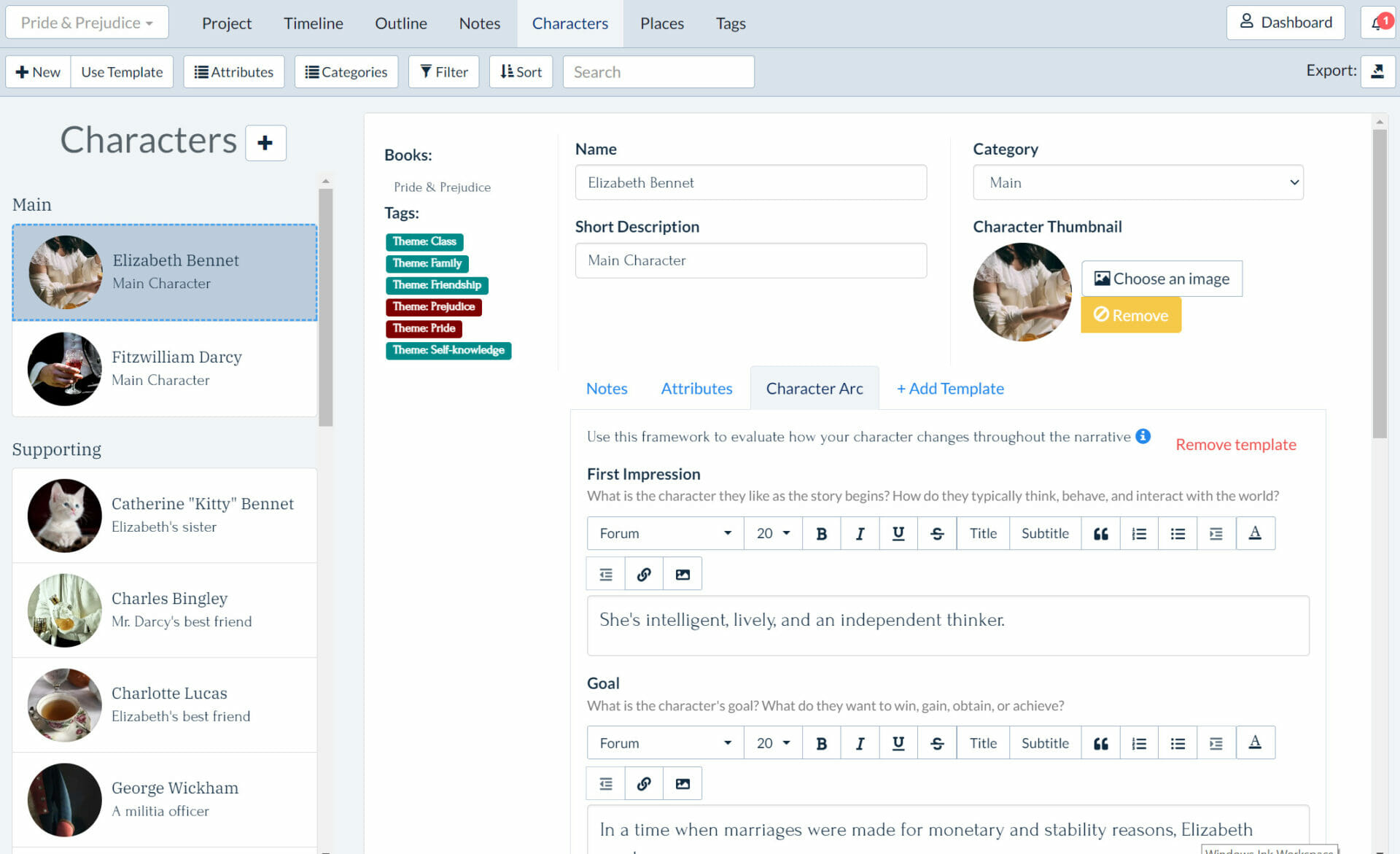
- First Impression: She’s intelligent, lively, and an independent thinker.
- Goal: In a time when marriages were made for monetary and familial reasons, Elizabeth wants to marry for love.
- Flaw: Her firm belief (prejudice) that Darcy is too prideful and arrogant.
- Aha! Moment: She learns that Mr. Darcy is the one who saved her family from scandal. She realizes that, despite how she’s readily accused him of being intolerably prideful and prejudiced, she’s not been any different.
- Action: Though her feelings for Darcy have changed, she’s afraid it’s too late — until he tells her that his affection for her hasn’t changed. She tells him she’s now willing to marry him.
- Transformation: Elizabeth overcomes her initial prejudice against Darcy (as he lets go of his pride in his social status with respect to hers) to realize that he’s what she wanted all along — a man she can marry for love.
How to Use the Template
If this sounds like a helpful device for building your own characters and stories, you’re in luck: with Plottr, incorporating an arc into your character building is easy.
Once you have Plottr setup on your computer, just follow these four steps to add the Character Arc template to your character:
- Step 1: Open Plottr and either start a new project or open an existing one
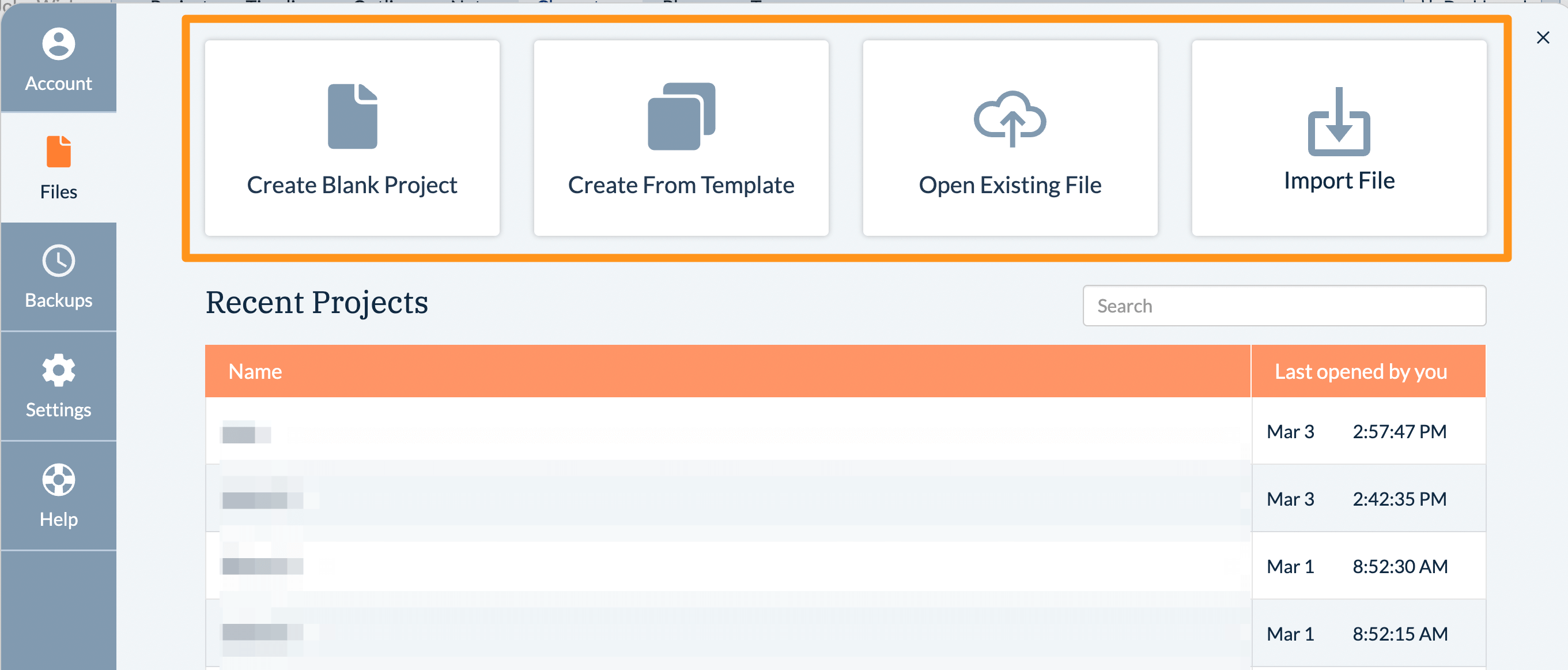
- Step 2: Once the project is open, navigate to the Characters tab and click the + button to create a new character (or edit an existing one), then click +Add Template
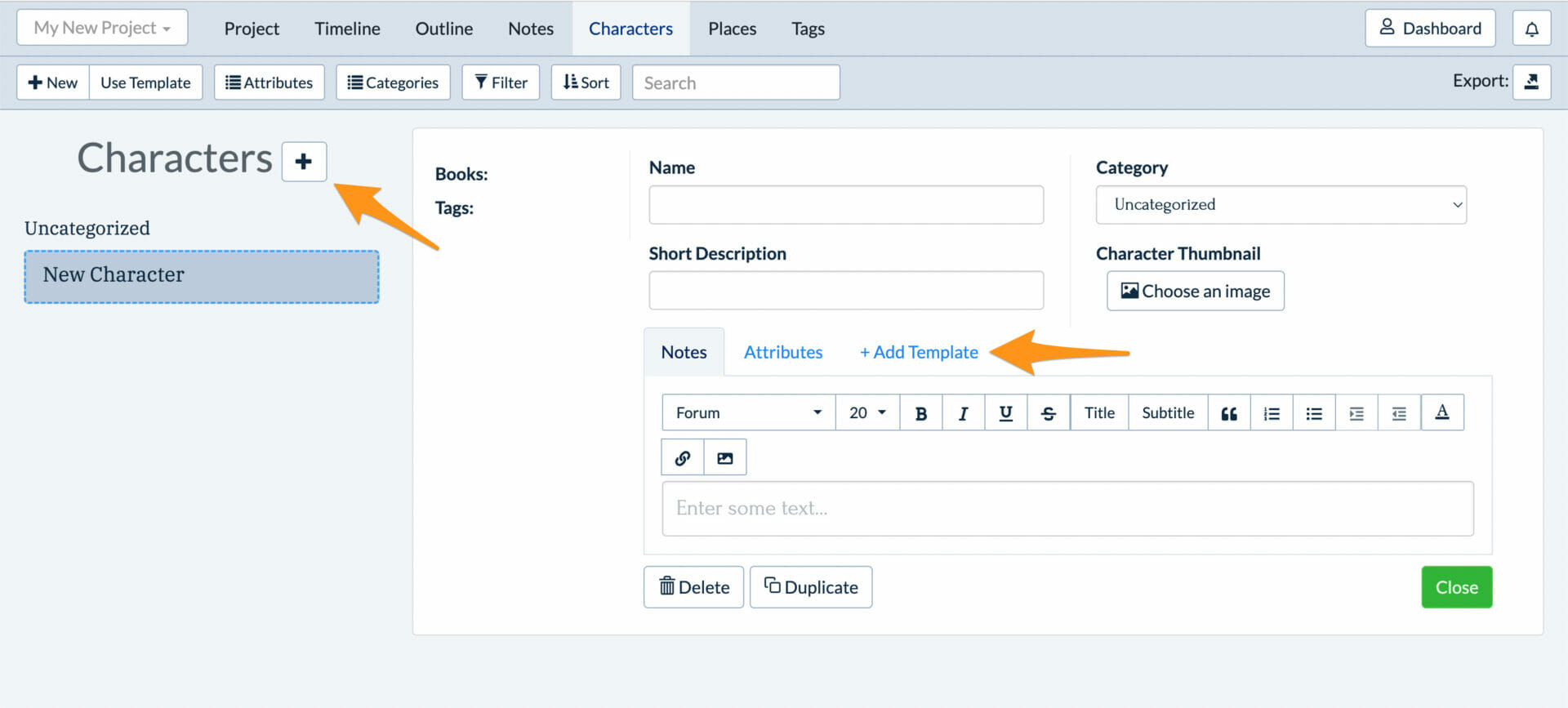
- Step 3: Select Big 5 Personality Traits from the list of character templates and click Choose to add it to your character’s profile
- Step 4: Click the Choose button to add the template to the character

- Step 5: Start filling in details of your new character template!
The characters in your story are on a journey and their internal progress along that path is as important as their external progress when it comes to inspiring connection and emotional investment from your readers. The Character Arc is a model for capturing that internal journey so it can better inform the plot and execution of your broader story.
As you’re writing, you can use multiple templates to help you build well-rounded characters and capture all the intricacies of their personalities. If you’d like to add more details to your profiles, the Character Arc template pairs well with these other Plottr templates:
With the Character Arc template available to help you craft a journey for your heroes, heroines, and villains, there’s no better time than now to give Plottr a try with a free trial.


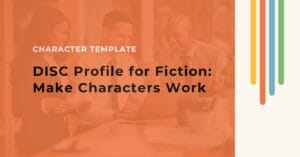
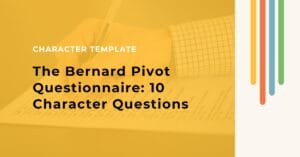
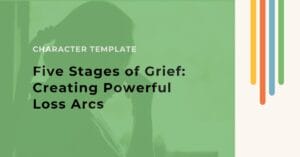




Comments